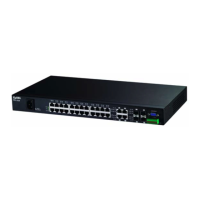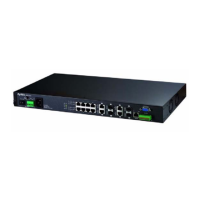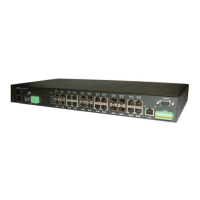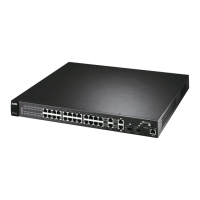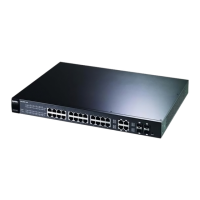Chapter 29 port Commands
Management Switch Card User’s Guide
808
29.24 PPPoA to PPPoE (PAE) Translation
Before migrating to an Ethernet infrastructure, a broadband network might consist of PPPoA
connections between the CPE devices and the DSLAM and PPPoE connections from the DSLAM to
the BRAS (Broadband Remote Access Server). The following figure shows a network example.
Figure 430 Mixed PPPoA-to-PPPoE Broadband Network Example
In order to allow communication between the end points (the CPE devices and the BRAS), you need
to configure the DSLAM to translate PPPoA frames to PPPoE packets and vise versa.
When PPPoA packets are received from the CPE, the ATM headers are removed and the system
adds PPPoE and Ethernet headers before sending the packets to the BRAS. When the system
receives PPPoE packets from the BRAS, PPPoE and Ethernet headers are stripped and necessary
PVC information (such as encapsulation type) is added before forwarding to the designated CPE.
You can use the
port paepvc command to create PVCs for PAE translation.
29.24.1 port paepvc delete Command
Syntax:
port paepvc delete <slot-port-vpi/vci>
This command removes a PAE PVC.
29.24.2 port paepvc set Command
Syntax:
port paepvc set <slot-port-vpi/vci> <profile> <mux> <pvid> <priority> [acname
<acname>] [srvcname <srvcname>] [hellotime <hellotime>]
where
<profile>
=
Name of an ATM profile.
<mux>
=
Encapsulation method (llc or vcmux).
<acname>
=
This field is optional. Specify the hostname of a remote access concentrator if there
are two access concentrators (or BRAS) on the network or that you want to allow
PAE translation to the specified access concentrator.
<srvname>
=
This field is optional. Specify the name of the service that uses this PVC. This must
be a service name that you configure on the remote access concentrator.
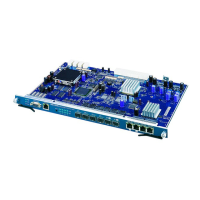
